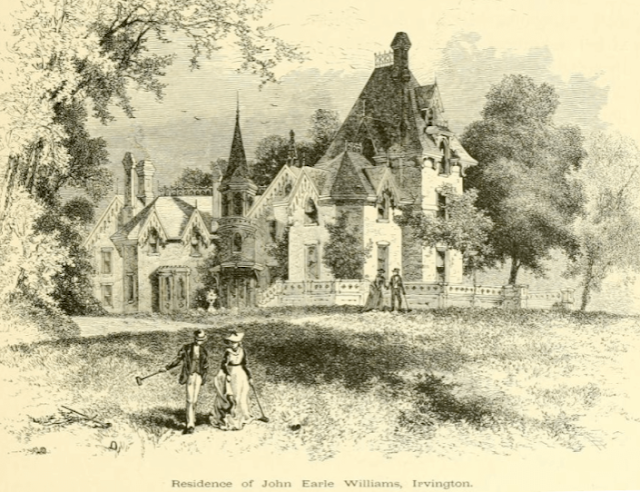Strawberry Hill: 38 rooms, a haunting and a history
His office of village president is known as mayor today.
Strawberry Hill was built in about 1850 by John Thomas, who was struck by lightning and killed, reportedly while admiring his house from one of its extensive lawns in 1855. For fans of the paranormal, Thomas is said by some to haunt the mansion’s five story tower to this day.
 |
Strawberry Hill Manor is shown in a screen grab of a real estate listing photo.
The mansion originally consisted of a 200-acre working estate and a 38-room, 13,000-square-foot manor house that included 12-foot ceilings, 10 rooms reserved as servant quarters, a drawing room, main and children’s dining rooms, parlor, studio, library, billiard room and card room.
Strawberry Hill was named after the eponymous Twickenham-on-Thames, London estate of 18th century writer Horace Walpole. Many interior design elements were copied from Walpole’s mansion.
During the ownership of Metropolitan Bank of New York president Williams, the manor is rumored to have been a stop on the Hastings-to-Tarrytown leg of the Underground Railroad moving escaped slaves to Canada, because of a tunnel discovered behind a hidden door in the mansion’s wine cellar.
The estate was later owned by English immigrant Charles Eddison, who retired because of ill health at age 30, the same time he emigrated to the U.S. He was heavily involved in local charities, politics -- he was a village trustee -- and banking and was a stalwart leader of historic St. Barnabas Episcopal Church in Irvington. His son, inventor and engineer William Barton Eddison, was born at Strawberry Hill in 1889.
The elder Eddison retired from business at around age 30 because of ill health but became renowned in Irvington, surrounding villages and Westchester County for his philanthropy and public service which included volunteer stints on many boards and committees until his death in 1922.
 |
| The Strawberry Hill mansion is pictured as it appeared in the 1880s as drawn by artist J. Thomas Scharf. (Illustration via “History of Westchester County,” 1886) |
A charming story which might shed some light on the character of Strawberry Hill -- and the village in general at the time -- appeared in The Irvington Gazette newspaper on Aug. 10, 1917:
“While crossing the fields of the Charles Eddison estate on North Broadway a few days ago, Clifford Smith of South A (Astor) Street stopped for a moment to pet one of the browsing cows which had crossed his path. Whether the cow was in bad humor caused by the weather or Cliff had a red shirt on, somehow that cow took a sudden dislike to being petted and with head bent gave Cliff several tosses while he was making for a nearby fence. We learn since that the cow is still eating grass and the young man’s trousers are at the tailors.”
 |
The “Strawberry Hill” estate in Irvington is shown east of North Broadway in this 1881 map of Irvington. The estate was bordered on its north by the George D. Morgan estate, to the south by the Augustus C. Richards estate and to the west (towards the Hudson River) by North Broadway. (George Washington Brumley, Westchester County Atlas, 1881) * Click here for links to other Gilded Age stories by this author |











My grandfather George Oetgen served as chaffeur to the Eddisons in the early 1900's. My father (his son) grew up in the Carriage house on the estate, and graduated from Irvington High School in 1927. When did the Eddisons leave Strawberry Hill?
ReplyDeleteThe estate's founder, Charles Eddison, died in 1922 (his wife had died two years earlier) and his heirs sold Strawberry Hill, the 80something-acre estate, in two chunks in late Oct./early Nov. 1923. First, 75 acres were sold to a developer and the remaining five acres and the main house, were sold to Dexter W. Hewitt of Barney Park, a Madison Ave. advertising executive a week later.
Delete